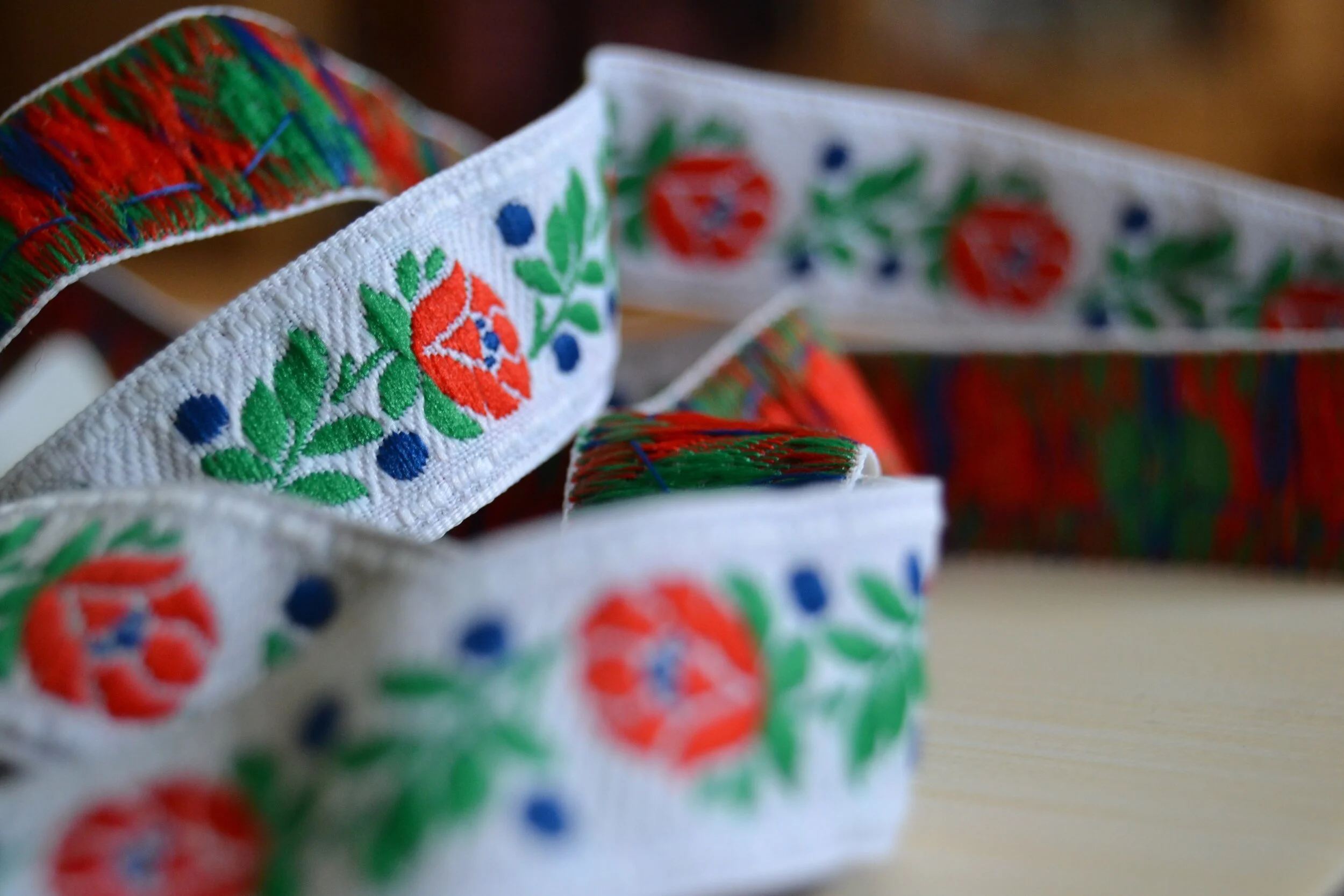The kroj (plural: kroje) is a Czech and Slovak traditional costume. From intricate designs and puffed sleeves to elegant suits, kroje are a vital component of Czech folk art. As a combination of western and eastern influences shaped by centuries of stylistic shifts, they are a stunning piece of cultural heritage and a source of pride for Czechs around the world.
Kroje varied widely across the major Czech regions of Bohemia, Moravia, and Silesia. Each subregion had its own costume, and kroje from the towns and villages within it had their own distinguishing characteristics. For example, the more rural Moravia and Silesia generally featured intricate embroidered patterns, while the wealthier Bohemians wore more expensive fabrics with less handiwork. It's estimated that there are about 550 different versions of kroje, though only 27 are widely known due to their association with important regions. Below are examples of the diversity of kroje throughout the Czech lands.
Regional Kroje - from Plzeň to Moravian Wallachia
Kroj Domažlický Kroj Plzeňský
Kroj Moravských Slováků
Kroj ze Starého Hrozenkova Valašský Kroj Moravský
Starý Valašský Kroj z Moravy Valašský Bača
Kroje and the Community
Kroje played an important role in all social events and folk gatherings, such as weddings and funerals. For example, in some regions, the style of one’s funeral kroj would signify their relationship to the deceased. Another interesting tradition is seen in the Chodsko region of Bohemia. Unlike what we’re used to today, the wedding costume in this region was black because weddings were actually seen as rituals of mourning - the black clothes decorated with floral patterns symbolized a loss of a son or daughter for the parents. In most regions, however, the wedding was a significant event for the community and a cause for great celebration. In fact, so much preparation and excitement surrounded these events that women would often begin making their wedding kroj years before they would actually get married. Whether tragic or joyful, the kroje of a community would reflect the events within it.
A kroj would provide meaningful insight into the life of its wearer. Along with their regional distinctions, kroje varied based on age, profession, social class, marital status, and environment. The kroj worn in the field was tougher and less ornate than the kroj worn to church or celebrations, winter kroje had additional garments for warmth, and young women and men wore special accessories, such as wreaths and feathers, to signify they’re unmarried. The greatest differences, however, were between men’s and women’s kroje. While men generally only wore linen or wool pants, an embroidered shirt, a belt, boots, and a hat, women’s kroje were a lot more complex. They included:
Moravian Kroje, Source: Mesto Hluk
Čepení - scarves, wreaths, ribbons, hats, or other headdresses
Obojek - elaborate collars, usually lace, embroidered, or pleated
Bluza - a blouse with baggy rukavce (sleeves), which were often stuffed to look full and tied with ribbon
Sukně - starched petticoats, multiple were worn to achieve a bell shape
Fěrtúšek - heavily decorated and embroidered apron worn over the sukně.
Šorec - separate back skirt worn over the sukně, same length as the fěrtúšek
Shoes or boots - depending on the region, decorated boots or various types of dress shoes would be worn with black, white, or red stockings
Kroje Throughout the Years
The kroj was an evolving part of the culture, and one can see a number of influences on it throughout the Czech Republic. Remnants of different art styles are apparent in the Gothic shawls worn over the head, Rennaissance pleats and lace, as well as Baroque bell-shaped skirts. However, despite diverse influences throughout the years, Slavic elements have remained the most prominent part of the kroj. With its intricate patterns and intense colors, each kroj is not only an impressive piece of folk art - but part of a rich, living history as well.
Bohemian Kroje, Source: Šechtl & Voseček
Beginning in the mid 19th century, with industrialization and the increasing dominance of cities over villages, the kroj began to get replaced by factory-made, ready-to-wear town clothing. It was said that the further west one lived, the sooner they gave it up. As Bohemia industrialized first, it was also the first to make the change, with the more rural parts of Moravia and Silesia following in its steps as late as the 1930s. With a few exceptions in isolated and rural areas, the kroj was completely out of use by the mid-20th century. However, it’s still a significant part of today’s Czech culture and is worn during festivals, celebrations, and traditional dances.
Kroje Today
Moravian Wedding Kroj
To Czechs, kroje symbolize a connection to their roots. Many families pass their kroje down through the generations as a way of preserving the memory of their ancestors. Today, some couples are even bringing back the tradition of wearing special kroje on their wedding day.
Among American Czechs, kroje are especially important. Descendants of immigrants form connections to their heritage through their traditional clothing, which is often worn at cultural festivals within Czech immigrant communities. It is also a widespread practice for American Czechs to trace their origins to a town or region in the Czech Republic and make a corresponding kroj.
Around the world, Czechs use kroje to celebrate their heritage, and artists, enthusiasts, and ethnographers alike work tirelessly to keep this beautiful part of their culture alive for generations to come.
Written by Pavle Bajić








